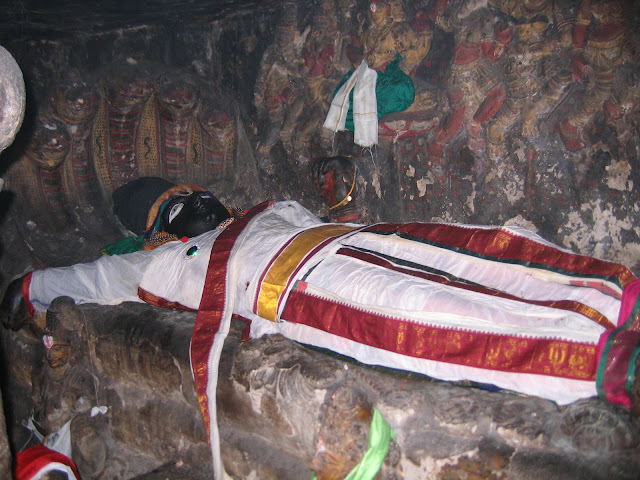Padmanabhaswamy temple is located in Thiruvananthapuram, Kerala, India. The temple is built in an intricate fusion of the indigenous Kerala style and the Dravidian style of architecture associated with the temples located in the neighboring state of Tamil Nadu, featuring high walls, and a 16th-century Gopuram.
While the Moolasthanam of the temple is the Ananthapuram Temple in Kasargod, architecturally to some extent, the temple is a replica of the Adikesava Perumal temple located in Kanyakumari District.It is the richest Hindu temple in the world. In terms of assets gold and precious stones, it is by far the wealthiest institution and place of worship of any kind, in the recorded history of the world.
In line with the Temple Entry Proclamation, only those who profess the Hindu faith are permitted entry to the temple and devotees have to strictly follow the dress code.

Several extant Hindu Texts like the Brahma Purana, Matsya Purana, Varaha Purana, Skanda Purana, Padma Purana, Vayu Purana, Bhagavata Purana and the Mahabharata mention this shrine. The Temple has been referred to in the (only recorded) Sangam Period of Tamil literature between 500 B.C and 300 A.D several times. Many conventional historians and scholars are of the opinion that
Travancore Royal Family:

In the first half of the 18th century, in line with matrilineal customs, Anizham Thirunal Marthanda Varma, succeeded his uncle Rama Varma as king at the age of 23. He successfully suppressed the 700-year-old stranglehold of the Ettuveetil Pillamar ("Lords of the Eight Houses") and his cousins following the discovery of conspiracies which the lords were involved in against the royal house of Travancore. The last major renovation of the Padmanabhaswamy temple commenced immediately after Anizham Thirunal's accession to the musnud and the idol was reconsecrated in 906 ME (1731 CE). On 17 January 1750, Anizham Thirunal surrendered the kingdom of Travancore to Padmanabha Swamy, the deity at the temple, and pledged that he and his descendants would be vassals or agents of the deity who would serve the kingdom as Padmanabha Dasa. Since then, the name of every

Temple structure:
The approach road to the Padmanabhaswamy temple
Main shrine:
In the sanctum sanctorum, Padmanabha reclines on the serpent Anantha or Adi Sesha. The serpent has five hoods facing inwards, signifying contemplation. The Lord's right hand is placed over a Shiva lingam. Sridevi-Lakshmi, the Goddess of Prosperity and Bhudevi the Goddess of Earth, two consorts of Vishnu are by his side. Brahma emerges on a lotus, which emanates from the navel of the Lord. The deity is made from 12,000 saligramams.

In order to perform darshan and puja, one has to ascend to the mandapam. The Deity is visible through three doors – the visage of the reclining Lord and Siva Linga underneath the hand is seen through the first door; Sridevi and Divakara Muni in Katusarkara, Brahma seated on a lotus emanating from the Lord's navel, hence the name, "Padmanabha", gold abhisheka moorthies of Lord Padmanabha, Sridevi and Bhudevi, and silver utsava moorthi of Padmanabha through the second door; the Lord's feet, and Bhudevi and Kaundinya Muni in Katusarkara through the third door. Only the King of Travancore may perform sashtanga namaskaram, or prostrate on the "Ottakkal Mandapam". It is traditionally held that anybody who prostrates on the mandapam has surrendered all that he possesses to the Deity. Since the ruler has already done that, he is permitted to prostrate on this mandapam.










